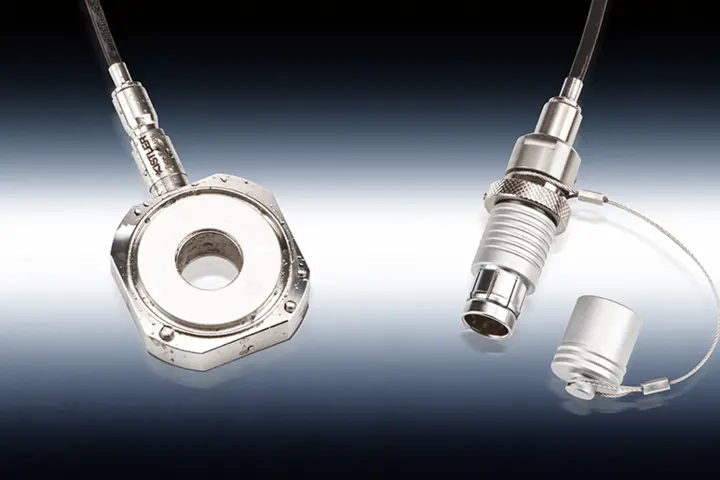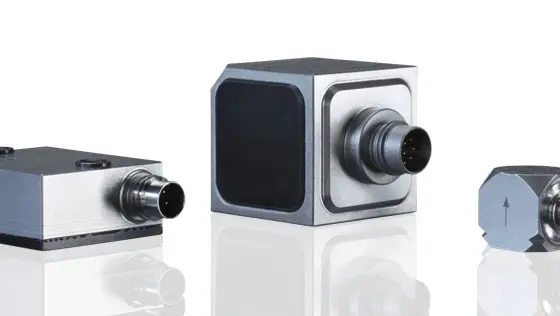According to ISO 20653, the protection classes for sensors are commonly IP65, IP67 and IP68. While IP65 offers protection against water jets, IP67 already allows temporary immersion. IP68 allows permanent immersion up to 1 m water depth, unless otherwise specified.
It is important to understand that it is the combination of sensor and cable that defines whether it is suitable under such conditions. Especially force, pressure and acceleration sensors are usually hermetically sealed, so that use in fresh water is enabled. The cable is the weak spot and in particular, the plug connection between sensor and cable.
Basically, there are three methods to connect the sensor to the cable. The most commonly applied is the screw connection, where the cable is screwed onto the sensor. Another option consists in welding the cable plug directly to the sensor. And finally, there are also sensors featuring an integrated cable.
Degrees of protection IP6x of screwed cables
Screw connections between sensor and cable are widely in use. The cable is screwed onto the sensor and offers the advantage that this connection can also be released again at any time.
In most cases, screwed cables allow to achieve a protection class of IP67. However, there are also some that achieve only IP65.
Some screwed cables from Kistler offer IP68 protection in fresh water. This applies to the following cables:
- Force, 1-component: Kistler Type 1983AD
- Kraft, 3-component: Kistler Types 1698AB, 1698AF, 1698AI, 1698AL, 1698AM
- Pressure (piezoelectric): Kistler Type 1983AD
- Acceleration, single-axis: Kistler Type 1592M1Q1
- Acceleration, triax: Kistler Type KIG4898xxQ1
Additional and detailed information can be found in the brochures of the Kistler product lines:
- Force
- Pressure
- Acceleration
Degrees of protection IP6x of welded cables
The welded cable is also widely used. Here, the sheath of the cable connector is welded to the sensor and offers the advantage of an inseparable connection.
For the following cable types from Kistler, protection class IP68 in fresh water is achieved when the cable is welded to the sensor:
- Force, 1-component: Kistler Types 1983AC, 1983AD
- Pressure (piezoelectric): Kistler Types 1983AC, 1983AD
Additional and detailed information can be found in the brochures of the Kistler product lines
Degrees of protection IP6x of integrated cables
Most sensors with integrated cables offer IP65 or IP67 protection. Especially for acceleration sensors there are some versions that offer IP68 in fresh water and are used in many underwater applications.
An overview is provided in the Kistler Acceleration product line brochure.




